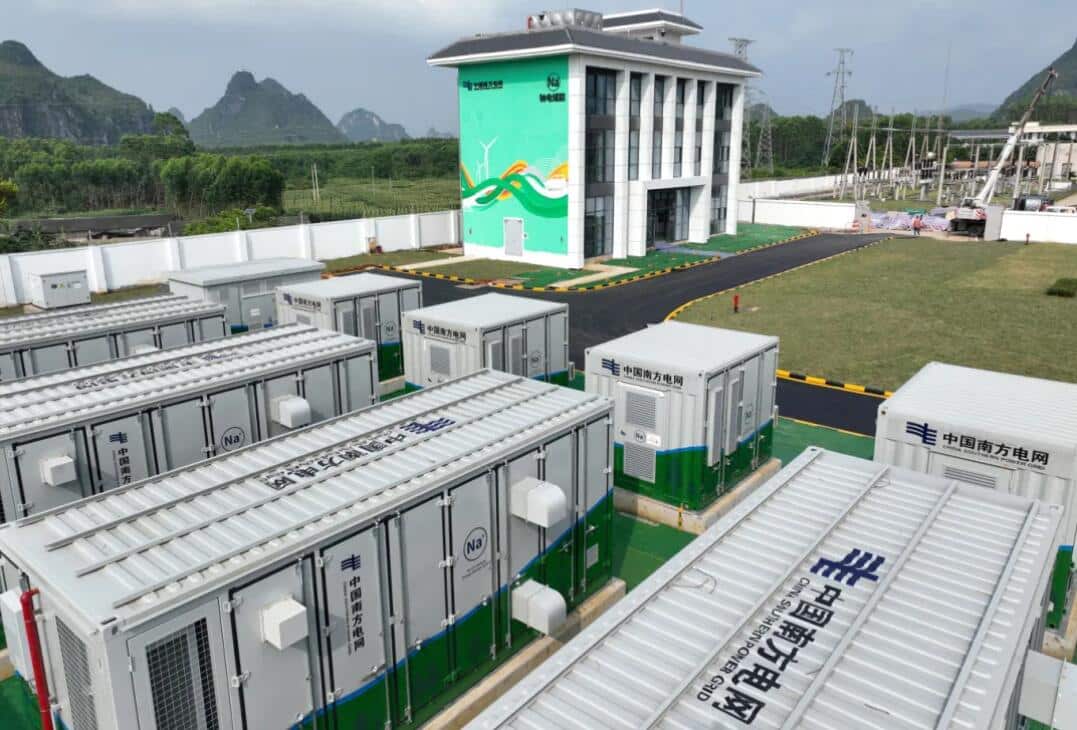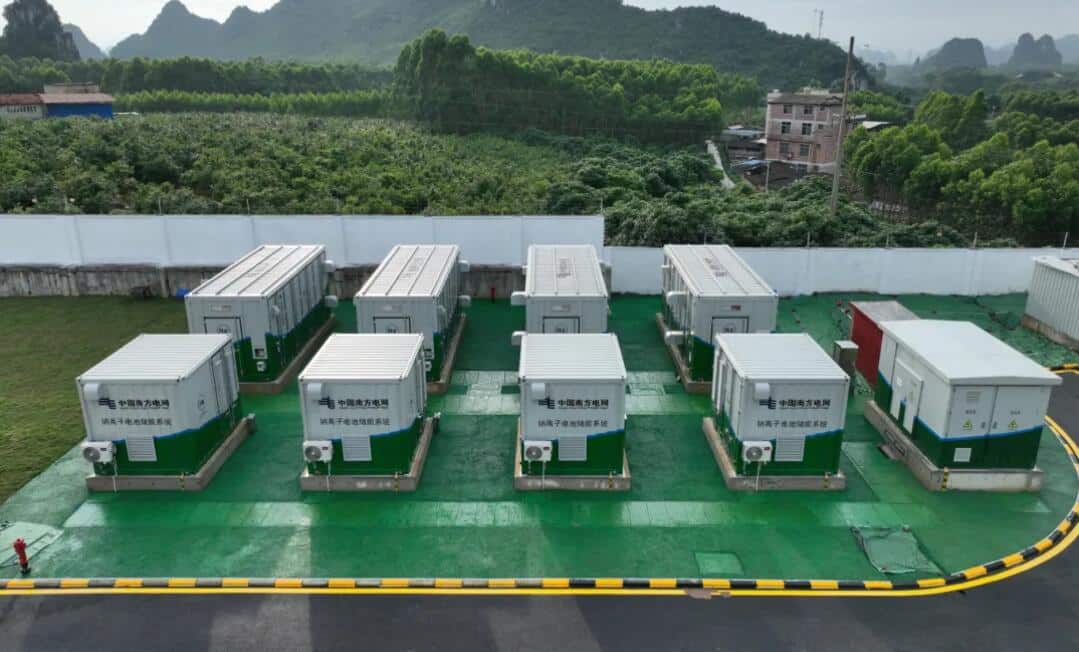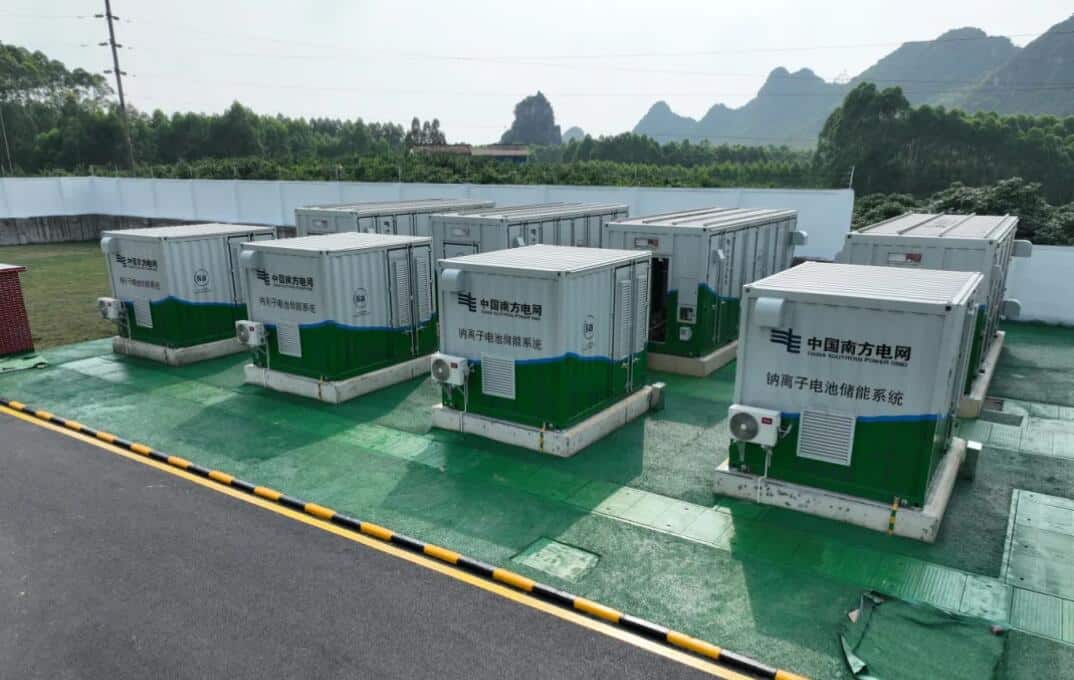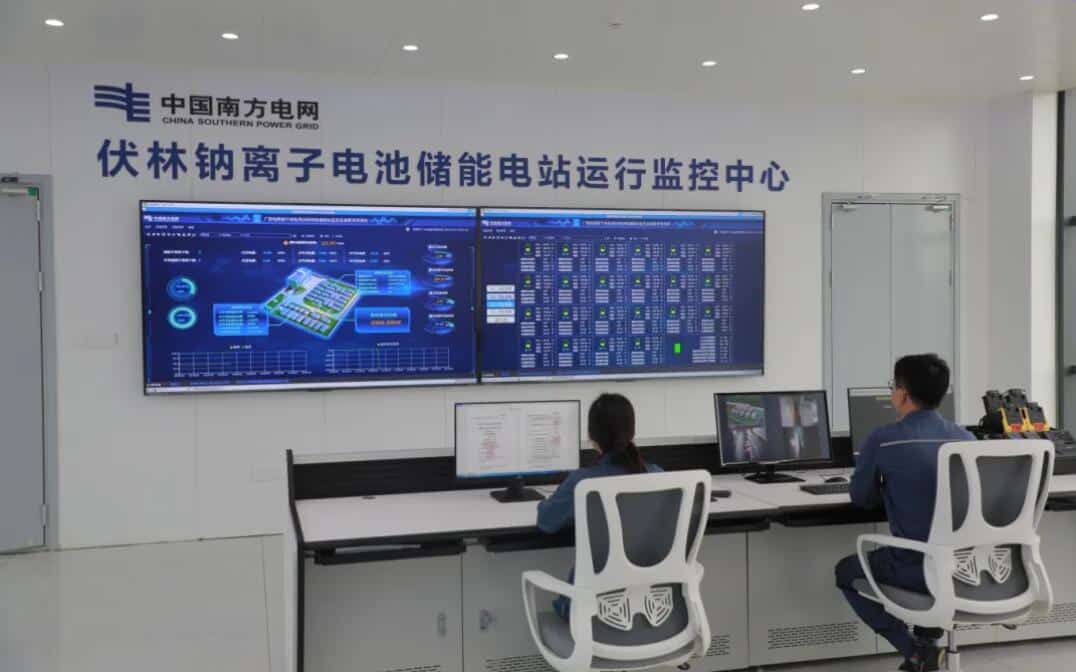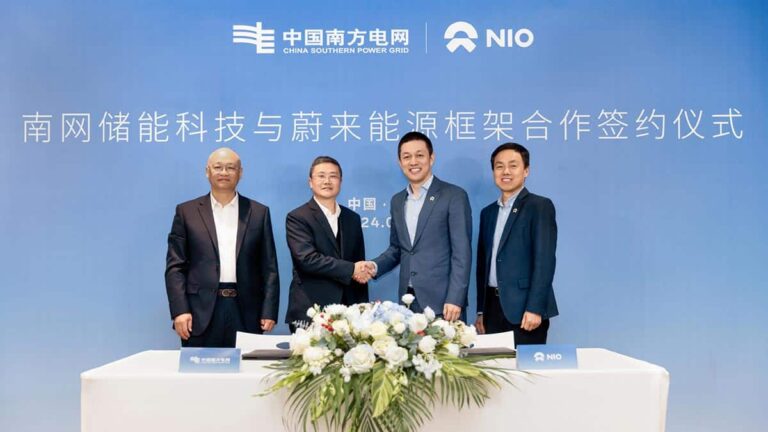A 10-MWh sodium-ion battery energy storage station has been put into operation in Guangxi, southwest China, the country's first large-scale energy storage plant using sodium batteries.
(Image credit: China Southern Power Grid Energy Storage)
China has put the first large-scale sodium-ion battery storage station into operation, marking the beginning of the adoption of the new, lower-cost battery for large-scale use.
A 10-MWh sodium-ion battery storage station was put into operation on May 11 in Nanning, Guangxi in southwestern China, said China Southern Power Grid Energy Storage, the energy storage arm of Chinese grid operator China Southern Power Grid.
The energy storage station, built by China Southern Power Grid's Guangxi branch, is the first phase of an overall 100-MWh project.
When the entire project is completed, it will be able to provide 73 million kWh of clean power annually, meeting the electricity needs of 35,000 residential customers and reducing carbon dioxide emissions by 50,000 tons, according to a May 11 statement from China Southern Power Grid Energy Storage.
By the end of the first quarter, the cumulative installed capacity of China's new energy storage projects had reached 35.3 million kWh, of which electrochemical storage, including lithium-ion batteries, accounted for more than 95 percent, according to the statement.
However, lithium-ion batteries have shortcomings, including a shortage of raw material resources, which make it difficult to support the sustainable and rapid development of China's new energy storage industry, the statement said.
Sodium-ion batteries and lithium-ion batteries have similar electrochemical mechanisms, both realizing energy storage and release through the reversible disengagement and embedding of cations between the positive and negative electrodes.
The anode of both types of batteries is carbon, with the difference that the cathode material of lithium-ion batteries contains lithium ions, while the cathode material of sodium-ion batteries contains sodium ions.
When charging, sodium ions are discharged from the positive electrode of the battery and enter the negative electrode through the electrolyte and diaphragm, storing energy into the battery.
When discharging, the sodium ions move in the opposite direction to the charging process, releasing the energy in the battery to the power system.
Compared with lithium-ion batteries, raw material reserves of sodium-ion batteries are abundant, easy to extract, low cost, better performance at low temperatures, and have obvious advantages in large-scale energy storage, China Southern Power Grid Energy Storage said.
When sodium-ion battery energy storage enters the stage of large-scale application, the cost can be reduced by 20 percent to 30 percent, and the cost per kWh of electricity can be reduced to RMB 0.2 ($0.0276), which is an important technical direction to promote the application of new energy storage, said Chen Man, a technical expert of China Southern Power Grid.
The 10-MWh sodium-ion battery energy storage station uses 210 Ah sodium-ion battery cells that can be charged to 90 percent in 12 minutes, according to the statement.
The project's R&D team built a thermal management system that keeps the temperature difference between more than 22,000 sodium battery cells within 3 degrees Celsius, and extends the time it takes for the cells to spread thermal runaway from 30 minutes to 2 hours, according to the statement.
($1 = RMB 7.2340)

